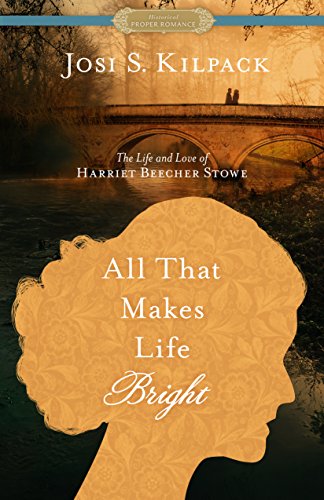All That Makes Life Bright: The Life and Love of Harriet Beecher Stowe
For those familiar with the 1852 anti-slavery novel Uncle Tom’s Cabin, a likely mental image of the author is that of a stodgy middle-aged woman, highly religious and staunchly abolitionist. It takes a leap of imagination to picture her young and in love. In All that Makes Life Bright, Harriet Beecher Stowe is portrayed as a 24-year-old bride, embarking on a domestic life—not what this well-educated, pampered daughter had envisioned for herself.
Harriet wants to write. But although she is devoted to literary pursuits, she also loves Calvin Stowe, a widowed theology professor. Despite warnings to the contrary, Harriet believes she will be able to keep house for Calvin while still following her muse. Unfortunately, she soon learns that Calvin’s idea of a good marriage is one that ensures his own creature comforts. Harriet is unable to satisfy the demands of hearth and home, and, too soon, she is utterly overwhelmed by motherhood. Calvin, stressed by financial insecurity, feels Harriet is just not trying hard enough to keep his house clean and his belly full. After all, his first wife did just that.
In this “Proper Romance,” part of a series featuring famous authors, the focus is on a young couple finding their path through the difficult first years of marriage, merging their very different expectations to build a solid partnership. Written in a simple and straightforward style, the novel also stresses Harriet’s religious conviction and anti-slavery beliefs. While modern women may find Calvin unbearable and his turnabout too-sudden, too-late, this is a realistic portrayal of attitudes and expectations of the times, making it even more remarkable that Harriet Beecher Stowe accomplished all that she did.










